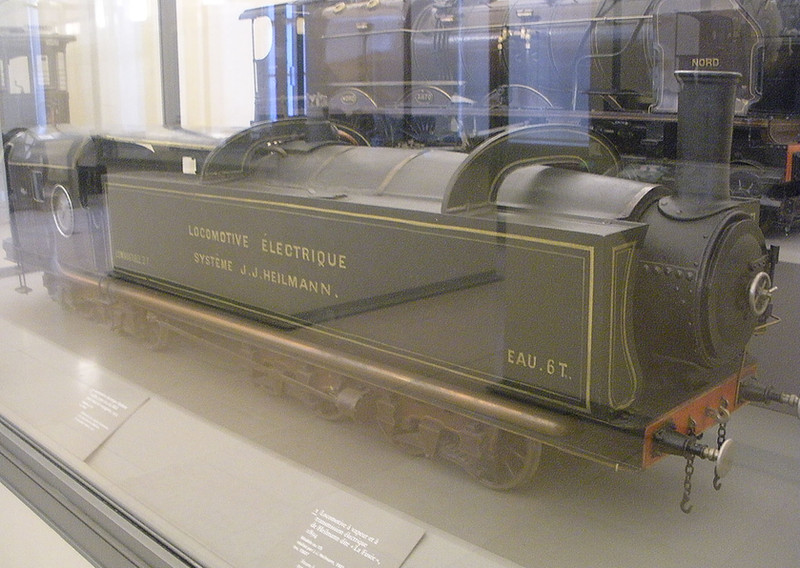HOME | DD
 rlkitterman — Heilmann Fusee Electrique - Side View
rlkitterman — Heilmann Fusee Electrique - Side View

#fusee #modelrailroad #modelrailway #modeltrains #ouest #parisfrance #railcar #rocket #sciencemuseum #sncf #steamengine #steamlocomotive #streamlined #streamliner #testtype #turnofthecentury #heilmann #cnam #electriclocomotive #electricengine #experimentalprototype #frenchrailways #europeanrailways
Published: 2016-09-07 21:03:53 +0000 UTC; Views: 1061; Favourites: 22; Downloads: 5
Redirect to original
Description
In 1890, Jean-Jacques Heilmann of France registered his patent for a steam-electric locomotive. He hoped that by connecting the steam engine to an electric transmission, the locomotive would inflict less "hammer-blow" on the track and be able to pull high-speed trains without railways having to set up overhead power lines or electrified third rails. Heilmann's first locomotive, La Fusée Électrique (The Electric Rocket), was built from 1892 to 1893. Compagnie française de matériel de chemin de fer (CFMCF) built the locomotive frame and bogies, Brown Boveri built the electric transmission, and Forges et Chantiers de la Méditerranée (FCM) built the SLM Winterthur-designed Lentz boiler and conducted the final assembly. Heilmann's first locomotive was about 55 feet long and weighed 110 tons, which was spread over the track by a D-D (0-8-8-0) wheel arrangement. It ran as a cab-forward locomotive with the fireman sitting between the boiler and the generator, and the driver sitting in a streamlined cab. La Fusée Électrique reached 107 km/hr while pulling an eight-car test train, and impressed the Chemins de Fer de l'Ouest with its speed, comfort, and fuel economy. After ordering two more Heilmann locomotives, Nos. 8001 and 8002, the Ouest deemed them too expensive and complicated for regular service. However, over the next few decades, diesel-electric locomotives would realize Heilmann's dream and eventually replace steam as the world's most common locomotives. This model of La Fusée Électrique was built by Mr. Heilmann himself in 1903 and donated to the Conservatoire National des Arts et Metiers (CNAM) in Paris. From this angle, you can see the overall shape of the experimental locomotive.Related content
Comments: 2

The Swiss used these as conversions during WWII, when oil and coal were hard to get.
👍: 0 ⏩: 0






















